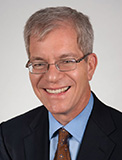Righting the Personnel Balance at State
President's Views
BY ROBERT J. SILVERMAN

Wondrously complex is the State Department personnel edifice. The job of AFSA president offers a close-up gaze from certain angles and, after 14 months on the job, here is my initial sketch.
State has five major personnel systems. The three career systems total roughly 75,000 employees, comprised of the Foreign Service with 14,000 members, two thirds of whom are overseas at any one time; the Civil Service with 11,000, nearly all based in Washington; and Locally Engaged Staff with 50,000 in overseas missions. There are two non-career systems of political appointees numbering several hundred and contractors whose numbers fluctuate widely.
AFSA represents the Foreign Service, focusing on its welfare collectively and individually, but not in isolation. The Foreign Service works alongside employees from the other four systems. We have mentors, colleagues and friends from each of them. We care about each other’s welfare and occasionally compete over who gets which positions. All this is normal activity inside the complex edifice.
The new trend, from my vantage point, is the recent expansion of political appointees both in overall numbers and in reach down to the middle manager level. One indication is the number of department employees hired under Schedule B authority, defined as limited-term appointments for individuals with specific foreign policy expertise. At the GS-14 and 15 levels (corresponding to FS-01), Schedule B employees more than tripled in number between 2008 and 2012, according to HR data, from 26 to 89 positions.
Why this sudden surge in mid-level limited-term employees? I suspect it was partly an incoming administration defining new needs and looking to some extent outside the career ranks in filling them. Part of it lies in a large pool of interested persons in think-tanks, NGOs and law firms who want a turn in government, and then a return to the private sector. Partly these are one-off needs for esoteric expertise not available at the time in the career ranks.
At the senior level, there are currently 40 special advisers, envoys and representatives at State; only five are either Civil or Foreign Service. Five of the six under secretaries of State are political appointees. Non-career members in such groups can provide important outside perspectives. We should welcome that, and also respect the ability of every Secretary to pick her or his own leadership team.
But the overall personnel balance in the edifice appears to me to have swung too far in one direction, to the detriment of both talent development in the career ranks and foreign policy effectiveness.
An expansion of political appointees has been observed more generally in the federal government, not only at State. The American Society for Public Administration and National Academy of Public Administration issued a joint memo at the outset of the second administration of President Obama on this trend and advised as follows: “Judicious reductions in the number of political appointees will improve government performance by increasing managerial capacity, decreasing harmful management turnover, and facilitating efforts to recruit and retain the best and brightest in government service.”
The career cadre most affected by the growth of political appointees domestically is the Civil Service. At the top end of the ladder, for instance, HR data in 2012 shows that non-career appointees occupied 83 percent of the assistant secretary of State positions designated Civil Service, while occupying none of those designated Foreign Service.
In the equivalent overseas positions—chief of mission jobs—the traditional percentage of political appointees is about 30 percent.
One of AFSA’s initiatives over the past year was to adopt and publicize a uniform set of qualifications applicable to both career and non-career ambassadorial nominees, which is now drawn on by the State Department in presenting the nominees’ qualifications to the Senate for confirmation.
In short, I hope my initial sketch of State’s personnel edifice doesn’t resemble something by M.C. Escher. AFSA is working closely with the department management on the issues raised herein, and this collaboration will, I believe, help right this picture over time.
Be well, stay safe and keep in touch,
Read More...
- Foreign Service Statistics (AFSA website)
- Reducing the Number of Political Appointees (by David Lewis) (Memos to National Leaders website)
- AFSA Supports A Uniform Set of Qualifications for Ambassador Nominees (February 14, 2014 AFSA Press Release)
- Department Organization (U.S. Department of State website)
- Pickering decries ‘expanded’ political appointments at State (Conversations with Nicholas Kralev TV series, June 4, 2013)

